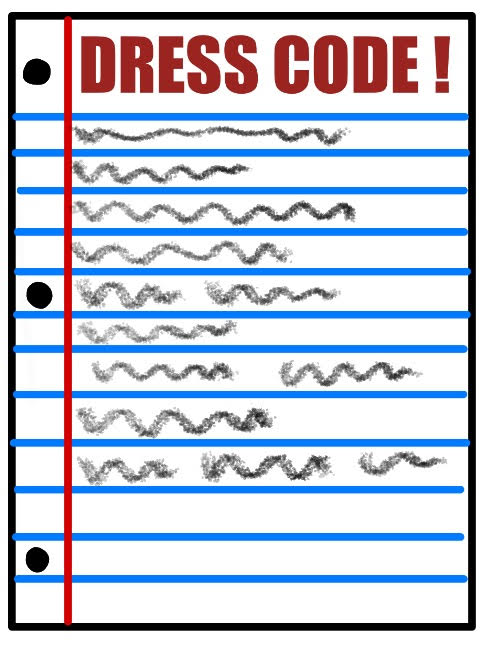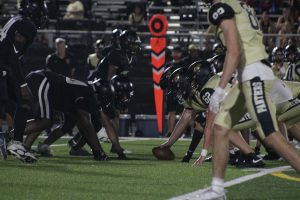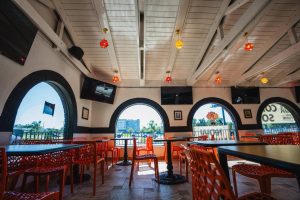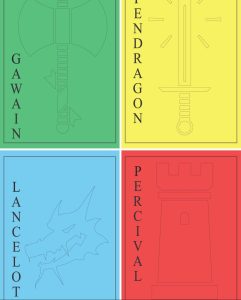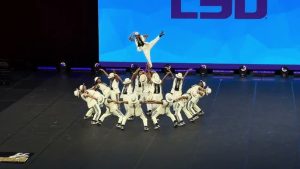ISSUE 1: Biology Field Trip Feature
October 18, 2021
Almost every year, Mrs. Oliver, Robinson High School’s HL Biology teacher, takes out her students on what she hopes will be the highlight of their school year: a field trip through the waters of Tampa bay, putting the principles they learned in the classroom and seeing the real effects of what they’re studying.
“Any time that I can get us out and away from the classroom, and get us putting into practice the things that instead of just reading them in books.. that’s always the goal and that’s always the best way of learning. Because I know that what we learned on the trip will stick with people a lot longer than just something that they’re reading about.”
Oliver plans this trip every year, although sometimes it doesn’t come to full fruition– most years she has to rely on fundraising or community help to provide the requisite funding for the trip. While this can present a problem at times, luckily she’s found funding from a different source this year: a full grant from the Department of Defense STEM sciences grant, per the stipulation that she is required to use a supplied submersible Remotely Operated Vehicle, or ROV. This not only provided the necessary funding, but also the opportunity to look at the water from a new point of view; the bottom of the seafloor.
“We’re very lucky to have [the ROV] here at Robinson… we’re the only school in Hillsborough County that has that. The ROVs were used on the boat in those two locations to do a Benthic survey, meaning that we launched it on the bottom to go look for fish and invertebrates, and to see what kind of life we would find on the bottom.”
In addition to a Benthic survey, students also got to take part in a choice of two other scientific activities: water quality testing, in which students measured the parameters of the water, and plankton collection, where students used complex equipment to trawl for small lifeforms living in the water. Each activity had two groups of people working on it, in different locations and at different times. As such, students were able to get an accurate measurement of how the water and life in Tampa Bay changed with location, be it inside of the shipping channels or out into the bay.
“Whenever there’s people, and there’s industry, and there’s houses and subdivisions.. we’re getting a lot of runoff into the water every time it rains, from roads, and houses and factories. I wanted to do a comparison of how the ecology is affected the closer you are to shore.”
“I split everyone into groups and everyone had a job to do.. and at each location we had a group that was doing water quality testing; they took a sample of water at site 1 and site 2, and they tested the parameters of temperature, pH, salinity, dissolved oxygen, and nitrates. We were looking to see the levels of pollution, because we know that certain lifeforms can only survive in tight parameters… We also dropped a Secchi disk, which is a measurement of the turbidity of the water, helping us determine how clear the water is.”
All this is in the effort of determining the conditions of the local ecology in Tampa Bay. A key element of this is determining to presence of so-called “indicator species”, which is where the plankton survey came into play:
“We know that some live better in what we’d call cleaner water, with less nitrates and pollution in the water, and if we’re seeing less of those, then that’s an indication that something’s going on. There are many different types [of plankton], and the abundance of those in different locations tells us how they’re doing in different spots.”
However, seafaring excursions weren’t the only part of the field trip. The trip was organized through the Florida Aquarium, who supplied the boat and crew. After returning to shore, students had the opportunity to explore the aquarium for a limited amount of time, getting the chance to see the large variety of creatures exhibited there. This was coupled with an exclusive Q&A with aquarium staff, where students gained firsthand knowledge of the careers of people working in biological fields.
“The Q&A session was something that I’ve never done before.. I wanted to get a look at how the aquarium supports the well being of 9,000 animals there. What I was looking to do with the Q&A was to get five biologists who work in different areas around the aquarium, and get an idea of their background, connections, and their viewpoints on conservation and its importance.”
Overall, the trip provided a great opportunity for students to take their learning into the real world– Oliver hopes that this can provide a jumping-off point for many students interested in biology as a career, as she’s seen in the past:
“I can not tell you how many times I have had students come to me afterwards and say that this really opened my eyes to things I have never considered before, this really got me thinking about what career plans, even what majors I might consider in college. That is something that’s so exciting for me, because there’s nothing better than knowing that I might have sparked a new interest in understanding the importance of conservation.”
SPLASH QUOTE(S):
“Most people only see the water from the surface, and don’t realize the teeming life that we have under it.”
“It gives my teacher heart serious joy, when I hear that its opened up opportunities or ideas that people haven’t thought of before.”




